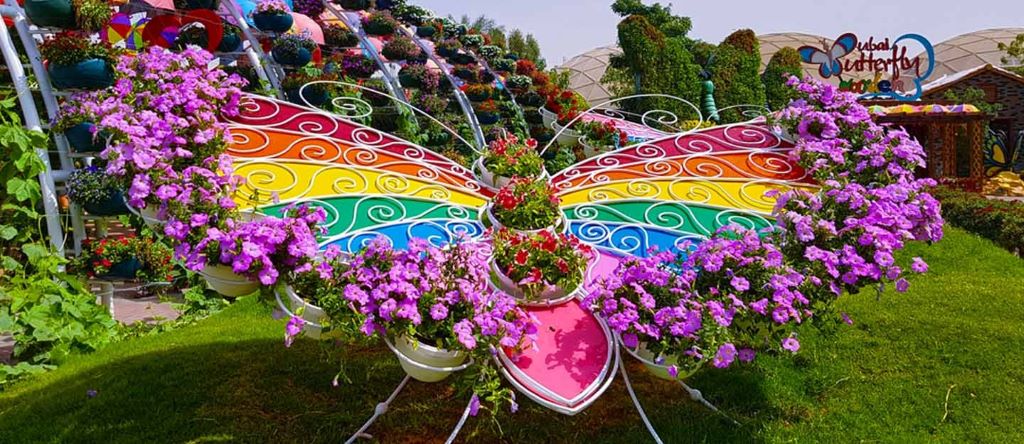Creating a butterfly garden with native host plants is an inspiring way to bring vibrant wildlife into your backyard while supporting local ecosystems. Butterflies rely on specific plants for food and as a place to lay eggs, making host plants essential for their lifecycle. By choosing native plants, you not only attract diverse butterfly species but also foster biodiversity in your area. To get started, explore Bestusatools and uncover the best resources for making your dream garden a reality.
Why Create a Butterfly Garden?
Butterfly gardens are not just visually appealing; they serve as a haven for pollinators and contribute significantly to environmental health. With nearly 20,000 butterfly species worldwide, many are facing habitat loss. By creating a garden with native host plants, you provide critical resources for their survival.
Native plants are adapted to local climates, requiring less water and maintenance than non-native species. Moreover, these plants often resist pests and diseases better, making your garden eco-friendly and cost-effective.
The Role of Native Host Plants in Butterfly Gardens
Native host plants are vital as they form the primary habitat and food source for butterflies during the larval stage. For example, milkweed is essential for monarch caterpillars, while pipevine swallowtails rely on pipevine species.
Planting these hosts ensures butterflies can complete their life cycle in your garden. Beyond aesthetics, it helps stabilize ecosystems by creating a thriving pollinator network, which is essential for food production and plant reproduction.
How to Choose Native Host Plants for Your Region
Selecting the right plants involves understanding your local butterfly species and their specific needs. Researching regional gardening guides or connecting with local conservation organizations can provide valuable insights.
Key considerations:
- Climate Suitability: Choose plants that thrive in your area.
- Butterfly Preferences: Identify butterfly species common to your region.
- Growth Conditions: Ensure your soil type and sunlight availability align with plant needs.
For a midwestern U.S. garden, include species like purple coneflower (Echinacea purpurea) or black-eyed Susan (Rudbeckia hirta), which support butterflies such as painted ladies and hairstreaks.
Planting and Design Tips for a Butterfly-Friendly Garden
Designing a butterfly garden is a blend of art and science. Keep these tips in mind:
- Layering Plants for Accessibility
Butterflies need both nectar and host plants. Arrange these in tiers to ensure easy access. - Clustering for Visibility
Butterflies are drawn to large patches of color. Group plants like zinnias or marigolds together for maximum impact. - Providing Shelter
Include shrubs or trees to shield butterflies from predators and extreme weather. - Ensuring Sunlight
Butterflies thrive in sunny spaces, so choose a well-lit location for your garden. - Avoiding Pesticides
Use natural pest control methods to protect delicate butterfly larvae.
Step-by-Step Guide to Creating Your Butterfly Garden
Start With Soil Preparation
Healthy soil is the foundation of any successful garden. Test your soil pH and nutrient levels, then amend it with compost or organic fertilizers as needed.
Select the Right Mix of Plants
Combine nectar-rich flowers like asters with host plants specific to your area’s butterfly species. Use online resources or gardening centers for plant recommendations.
Planting Tips for Longevity
Dig holes twice as wide as the root ball of each plant, allowing roots to establish quickly. Water thoroughly after planting to minimize transplant shock.
Install Butterfly-Friendly Features
Incorporate elements like shallow water dishes, flat stones for basking, and shaded corners to make your garden inviting.
Ongoing Maintenance
Regularly prune dead leaves or overgrown areas using the best pruning shears. Click on https://bestusatools.com/gardening-tools/pruning-shears/best-pruning-shears/ to find reliable options for keeping your garden tidy.
Common Butterflies and Their Host Plants
| Butterfly Species | Native Host Plant |
| Monarch | Milkweed (Asclepias spp.) |
| Eastern Black Swallowtail | Dill, parsley, fennel |
| Gulf Fritillary | Passionflower (Passiflora spp.) |
| Painted Lady | Thistle, hollyhock, mallow |
Plant these to cater to specific butterfly species, ensuring a diverse and dynamic garden.
FAQs
What are the best plants for a butterfly garden?
Native host plants like milkweed, dill, and pipevine, along with nectar plants such as zinnias and asters, are ideal.
Do butterfly gardens attract other wildlife?
Yes, they also attract bees, hummingbirds, and beneficial insects, enhancing biodiversity.
How do I prevent pests without harming butterflies?
Use organic solutions like neem oil or companion planting techniques to deter pests naturally.
Can I grow a butterfly garden in a small space?
Absolutely! Container gardening works well for butterflies. Focus on a few key host and nectar plants.
What is the best time to plant a butterfly garden?
Spring is ideal as it aligns with the lifecycle of most butterflies, giving them resources when they emerge.
How long does it take for a butterfly garden to establish?
Within one season, you’ll see butterflies visiting. Full establishment may take a year.
You Might Enjoy: Smithing table Minecraft: How to make?
Conclusion
Creating a butterfly garden with native host plants is a fulfilling way to engage with nature, promote biodiversity, and enjoy a vibrant outdoor space. With a bit of planning and care, your garden will become a sanctuary for these beautiful creatures, contributing to the preservation of essential pollinators.
